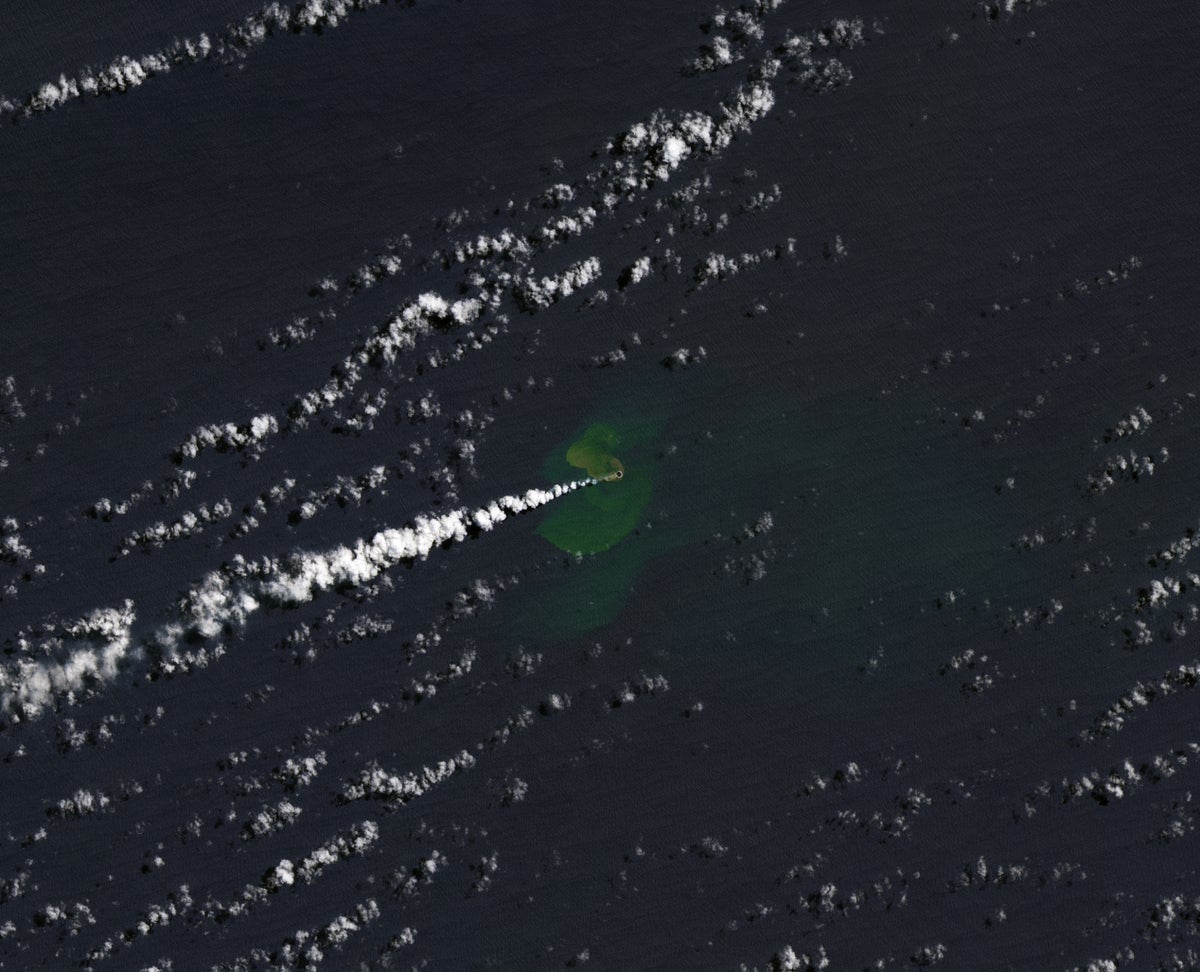
The central Tonga islands recently welcomed its newest member – a “baby” landmass rising out of the waters of the southwest Pacific Ocean.
The new island appeared about eleven hours after the Home Reef volcano, submerged among the Ha’apai group of islands in the centre of the Tonga archipelago, started spewing lava and ejecting plumes of steam and ash, discolouring the surrounding water.
Located southwest of Late Island, the newborn grew quickly in size as the volcano oozed lava for days.
While researchers with Tonga Geological Services estimated the area of the young island to be around 4,000 square metres on 14 September, by 20 September, it had grown by six times to cover a 24,000 sqm area.
Unfortunately, however, the Nasa Earth Observatory says that the lifespan of the island may not be very long.
“Islands created by submarine volcanoes are often short-lived, though they occasionally persist for years,” it said.
Home Reef, which sits within the Tonga-Kermadec subduction zone, an area where three tectonic plates are colliding at the fastest converging boundary in the world, has had four recorded periods of eruptions in the past 170 years, said the North American space agency.
While small islands were temporarily formed after eruptions in 1852 and 1857, eruptions in 1984 and 2006 produced ephemeral islands with cliffs that were about 50 to 70m high, it added.
“An island created by a 12-day eruption from nearby Late‘iki Volcano in 2020 washed away after two months, while an earlier island created in 1995 by the same volcano remained for 25 years.”
The Home Reef volcano which erupted on 10 September, has effusive lava flowing into its 16th day. Though the volcano activity poses a “low risk” to the local Vava’u and Ha’apai communities, Tonga Geological Services has advised all mariners “to sail beyond 4km from Home Reef”.







